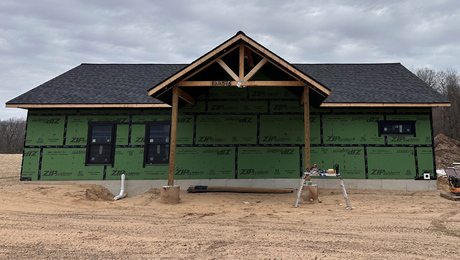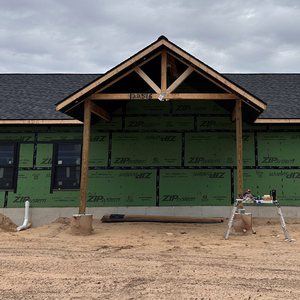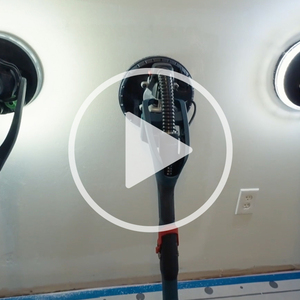What’s the story with insulated flexible duct? I see it going in lots of high-dollar homes these days, and it would seem to be the perfect solution to duct leakage, but I’m wondering just how long the stuff lasts and if I have to up-size for line loss or make some other adjustment(s).
Discussion Forum
Discussion Forum
Up Next
Video Shorts
Featured Story

Listeners write in about earning trade-work merit badges and ask questions about radiant cooling, indoor air quality, and radon-control systems.
Related Stories
Highlights
"I have learned so much thanks to the searchable articles on the FHB website. I can confidently say that I expect to be a life-long subscriber." - M.K.
Fine Homebuilding Magazine
- Home Group
- Antique Trader
- Arts & Crafts Homes
- Bank Note Reporter
- Cabin Life
- Cuisine at Home
- Fine Gardening
- Fine Woodworking
- Green Building Advisor
- Garden Gate
- Horticulture
- Keep Craft Alive
- Log Home Living
- Military Trader/Vehicles
- Numismatic News
- Numismaster
- Old Cars Weekly
- Old House Journal
- Period Homes
- Popular Woodworking
- Script
- ShopNotes
- Sports Collectors Digest
- Threads
- Timber Home Living
- Traditional Building
- Woodsmith
- World Coin News
- Writer's Digest


















Replies
Most manufacterers list on the box the maximum length you can run flex duct, 6 inch is around 14 feet. Resistance to air flow inside the pipe is the determining factor. Some companies offer three levels of insulation. Mice can and will chew holes in pipe. If its installed properly its a good product.
My HVAC guy told me 10 feet of run Max of the plentum
What I've been told is that 1 foot of flex has the same resistance as 10 feet of straight pipe.
You see lots of flex duct in homes because the builder is dictating how much money will be spent on the HVAC system of that house.
Flex duct is fast and cheap, not necessarily good.
The only way the HVAC contractor can get the job is to meet the builders price point when bidding on the job.
Sealed and insulated metal duct takes a whole lot longer to install. It also works better and will last the life of the structure.
Just like metal duct, flex can be crushed, broken and not installed properly. The really fast (cheap) companies use duct tape only to make their flex connections. Those nylon ties become brittle over time, especially in an attic, and can break.
A proper nylon tie connection is one tie on the inner sleeve and one on the outer insulation sleeve. I have been told to use one tie only, on the outer sleeve, by my boss. Hell, it only has to last a year, right?
Some regions mandate the use of duct sealer (mastic) even on flex joints in a residential application.
Properly installed, there is nothing wrong with something like 5' of flex on a duct run (where it is accessible) to reduce fan and air noise.
It should never be used as a substitute for proper metal ductwork.
Nothing like a million dollar home with a $9.99 HVAC job....
Right On!! Right On!!! Right On!!! Have just seen your last statement.
Too bad so many homebuyers are concerned about things on top of the drywall instead of the stuff buried behind it that will effect the comfort and reliability of the home for the life of the structure.
Makes no sense to me.
You most certainly upsize the lines from what sheet metal ducts would be. There are computations you can do for sizing the lines.
I like the flex duct. The most important aspect of it is that it "fits" better where space is contorted or tight. I remember fondly the time I had a HVAC firm put in duct work. They ran 2 12" round ducts through an access passage blocking any access to the blower. I tore out their work and installed 14" flex. Left a nice 2' wide access passage.